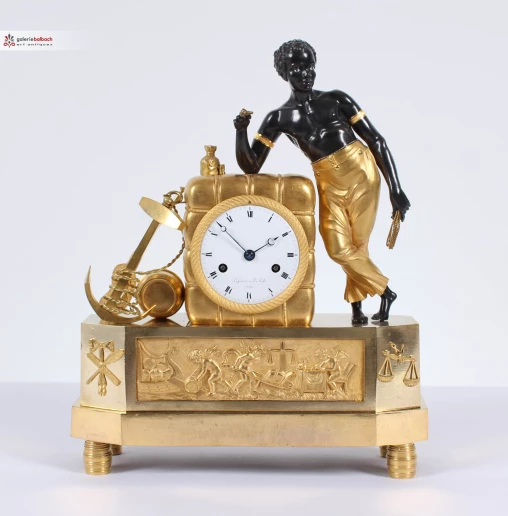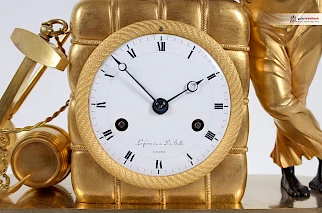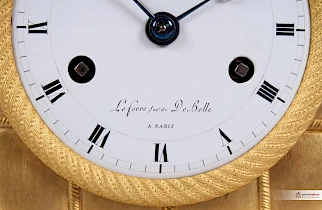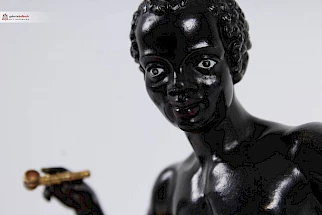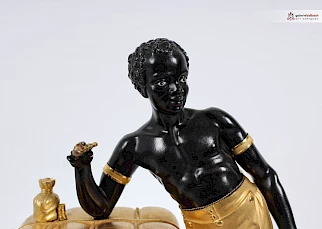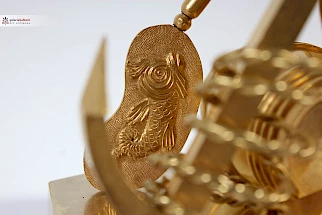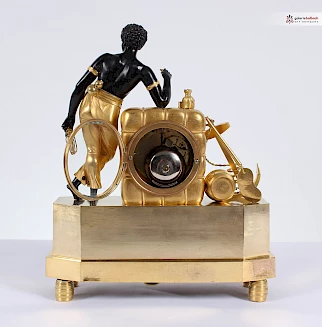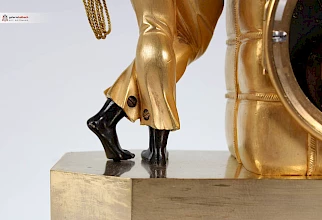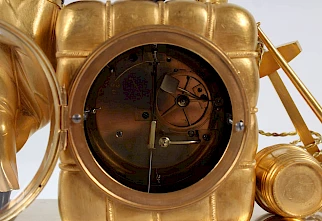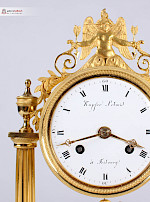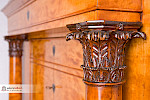Matelot - The Sailor
Paris
Bronze (fire-gilt and patinated), enamel
Empire around 1810
Dimensions: H x W x D: 37 x 30 x 11 cm
Description:
Eight-day movement with lock disc and thread suspension.
Strike on bell on the half and full hour.
Breguet hands.
Dial signed: Lefevre suc. De Belle a Paris. (suc. stands for succedit (the successor to ....) Lefevre took over the business from De Belle)
The pyramid-shaped main group of the bronze clock is dominated by the figure of a young black sailor casually leaning his elbow on a large ball of tobacco while smoking a pipe. The pendulum, in which all elements are meaningfully related to each other both compositionally and in terms of their significance, represents an allegory of trade.
The pendulum's depiction follows a detailed design drawing labelled "Michel, no. 120 aoust 1808 du dépot legal" (Paris, Bibliothéque nationale, Cabinet d'Estampes, Album Le 30). This is the bronzier Michel, who worked in Paris after Tardy. He ran his workshop in the rue Pastourelle in 1812 and in the rue du Parc in 1820.
The bronze figure is of the highest quality, both in terms of the craftsmanship and the artistic moulding.
The crossed legs, the tilt of the upper body and the turn of the head to the right give the figure an impression of movement and yet it is at rest. The musculature is perfectly sculpted and anatomically modelled and is accentuated even more by the shiny black patina. The golden upper arm bands, the pipe and the rope form an attractive contrast to the dark, shimmering black. The brightly shining eyes also stand out from the darkness and make the figure appear very lively. The sailor shows himself in all his beauty without falling into a rigid pose.
The quality of the pendulum is also demonstrated by how harmoniously the figure of the sailor is linked to the overall composition. While he leans towards the bale of tobacco on the right, an anchor, a rudder and a rum barrel symbolising trade and shipping lean against the left. They flank the central bale, in which the clockwork with white enamelled dial is integrated.
The large bag of gold pieces on the bale indicates that trade in colonial goods was a very profitable business.
The design of the rectangular base with bevelled corners is also entirely dedicated to the theme of trade: the four feet are shaped like rum barrels and the relief on the front shows small winged putti playfully imitating the activities of trade in goods from exotic countries. One of the putti is rolling a barrel of rum onto a ship, another is busily transporting a bale of tobacco on a wheelbarrow and another is busily piling up pieces of gold and doing hard office work. The appliqués on the bevelled corners - quill, measure and scales - also belong to this theme.
[Source: Elke Niehüser - Die französische Bronzeuhr p. 142-143]
Price: This object is no longer available. Objects comparable in quality, condition and rarity are priced at around €15,000 to €17,000.
This object is illustrated in various reference books, including:
Elke Niehüser - The French bronze clock Fig. 231
Giacomo et Aurélie Wannenes - Les plus belles pendules francaises p. 313
The watchmaker Lefevre is listed in the literature:
Brian Loomes - Watchmakers and Clockmakers of the World p. 474
Article found under: Clocks
Also interesting
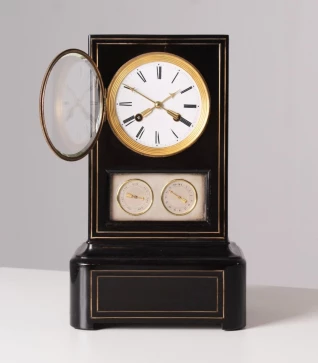
Antique Mantel Clock with Calendar
France
Wood, brass
Mid 19th century
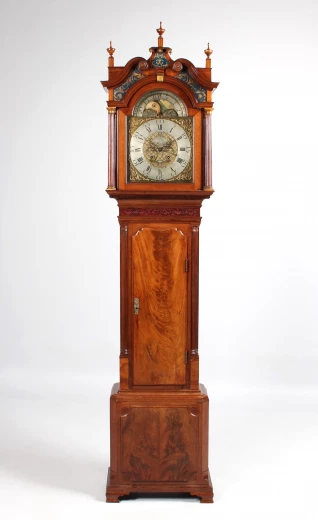
Lancashire grandfather clock with date and centre seconds
Liverpool
Mahogany
around 1785
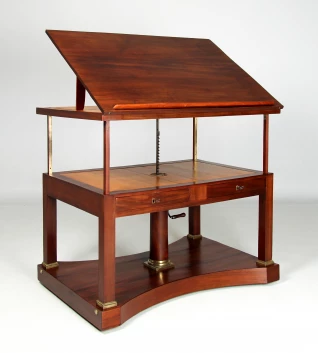
Height-adjustable architect's table
France
Mahogany
early 19th century
